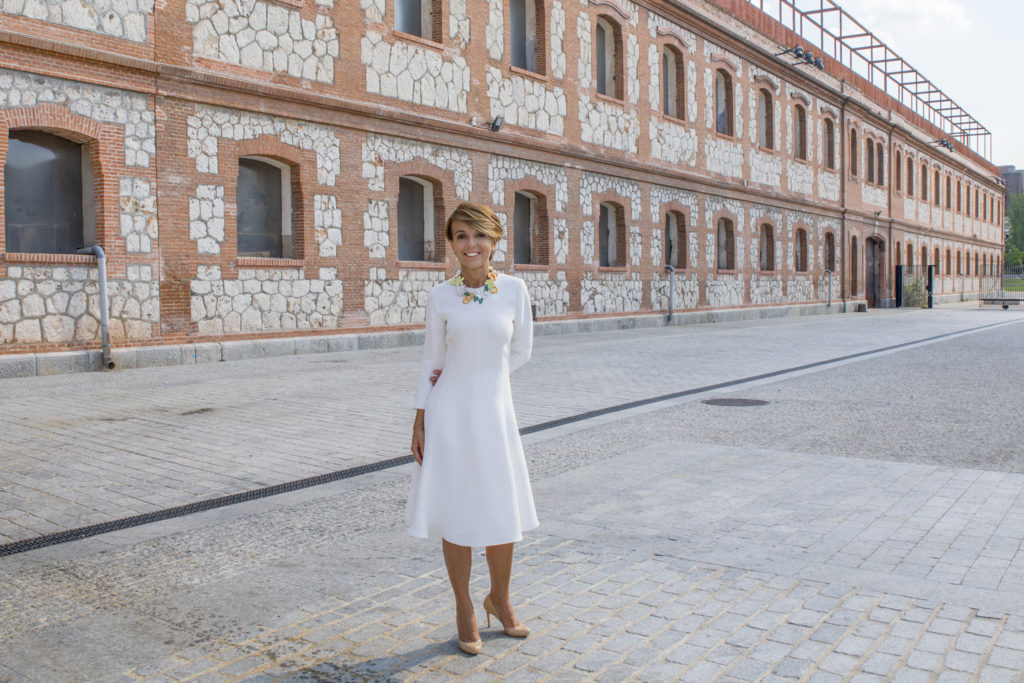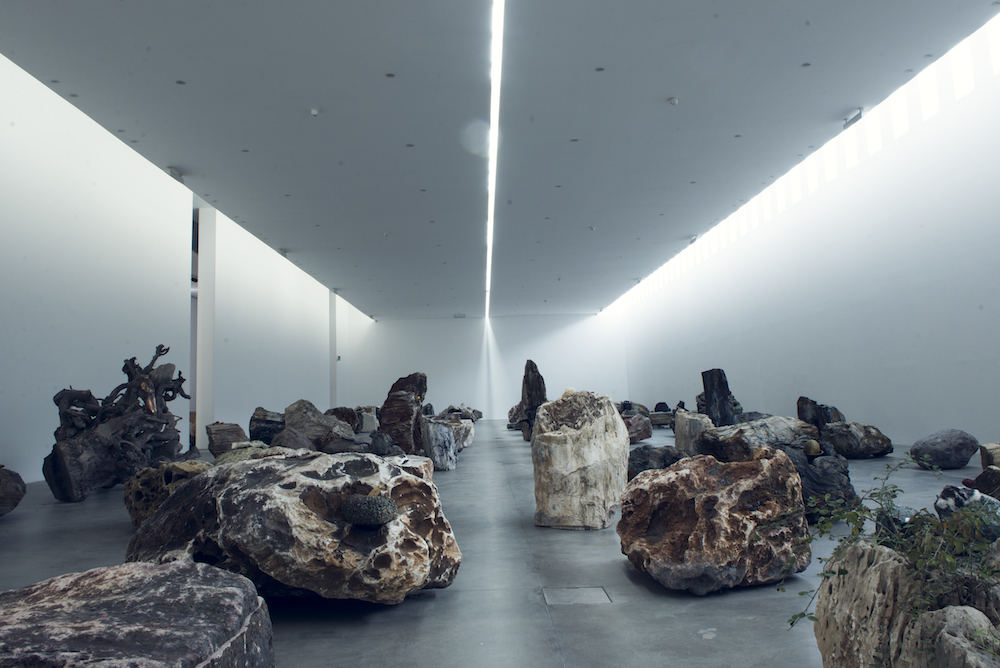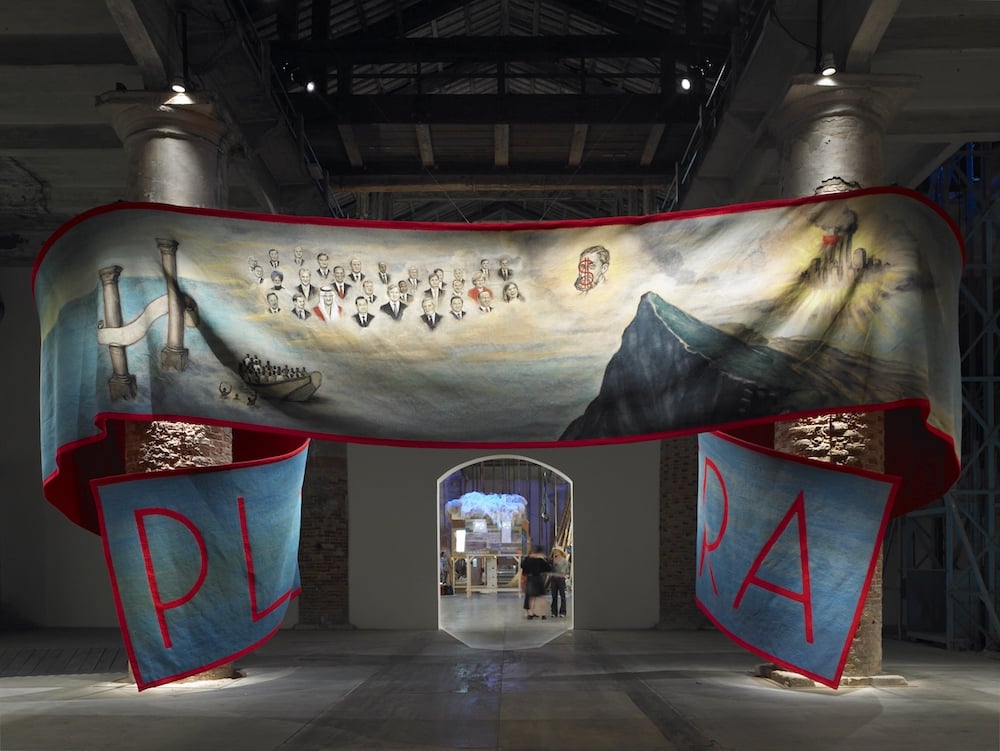Art World
Tireless Collector Patrizia Sandretto Re Rebaudengo Will Bring Her Art Foundation to a Former Madrid Slaughterhouse
The new space will be the second home of the Italian philanthropist's arts foundation.

The new space will be the second home of the Italian philanthropist's arts foundation.

The official announcement today that Patrizia Sandretto Re Rebaudengo will open a branch in Madrid of her renowned art foundation will come as a big surprise for many art world observers. But the expansion is a long-held dream of the Italian collector and philanthropist, whose Fondazione Sandretto Re Rebaudengo (FSRR) was first established in Turin in 1995, and has since become a mainstay of the Italian art scene.
Located in Madrid’s Matadero—a former slaughterhouse turned into a sprawling cultural center near the Manzanares river—the new foundation will be hosted in the compound’s Nave 9 building, which covers a surface area of 165,415 square meters.
The grade listed nave is an impressive sight, but since its industrial features weren’t designed for exhibiting contemporary art, Sandretto Re Rebaudengo has tapped the renowned British architect David Adjaye to renovate and recondition its interiors.
With an opening date planned for 2019, the new foundation will showcase, on a rotating basis, 100 artworks from the Sandretto Re Rebaudengo collection that will be on long-term loan to the Madrid project.
In an exclusive interview conducted before the plans were made public, artnet News spoke to the Italian powerhouse to find out more about her plans for the Spanish outpost.
Why Madrid? What is your relationship with the city and why did it make sense to open a branch of your foundation there?
I had been thinking of extending FSRR’s horizons for a long time, considering the possibility of setting up a new project outside Turin. I evaluated various possibilities and different locations, both in Italy and abroad. The choice of Madrid lies first of all in my love for Spain—I consider it my second homeland. I’m fascinated by Spanish culture, I have many friends there, I’ve spent several summer holidays in Spain, and I have a great connection with the Spanish people.
But there are other reasons: Madrid is a great global capital, a bridge with Latin America, which today plays a leading role in the contemporary art scene. Crucially, I’ve been invited to show part of my collection in Spain a few times [at ARCOMadrid in 2000; at IVAM Valencia in 2003; at the Fundacion Banco Santander in Madrid in 2011; and at Fundacion Francisco Godia in Barcelona in 2014], and I’ve always had good feedback.
I literally fell in love at first sight when I visited the Matadero. This international center for contemporary creation, supported by the Madrid City Council, impressed me. I was intrigued by its buildings’ architecture, with the typical red-brick façades, and by its transformation from a slaughterhouse, set up at the beginning of the 20th century, to a vibrant interdisciplinary center for contemporary culture. Like in Turin, I was interested in the life of a district different from the traditional touristic ones and in the impact that artistic and cultural activities may have on the social fabric.

View of one the buildings at Matadero de Madrid. Photo by Tamorian, courtesy of Wikimedia Commons.
Madrid is a city that already boasts a number of great art museums and foundations. What will your foundation do in Madrid that’s different?
Our aim is to support and promote artists by commissioning and producing new works, and to bring an ever-growing public closer to contemporary art. Madrid has high-profile cultural offerings, thanks to internationally famous museums like Museo del Prado, Museo Nacional Centro de Arte Reina Sofia, Museo Thyssen-Bornemisza; a lively network of art galleries; and the fair ARCO. So we plan to interact with the local Spanish institutions while bringing to Madrid the Fondazione Sandretto Re Rebaudengo’s working methodology, which is based on constant research on new generations of artists, both locally and internationally.
In terms of specific programs, what will differentiate your Turin space from your Madrid one?
The Fondazione’s approach is developed in strict connection with the local territory in which it operates, so each venue will have its own profile, closely related to its local scene. In Madrid, the exhibition program, as well as the collateral events (including our education program), will focus specifically on the local context and communities. At the same time, the relationship between the two venues will foster a dialogue that might allow the circulation of special projects and exhibitions from Turin to Madrid and vice versa. Moreover, the Nave 9 will present a selection of works from the Sandretto Re Rebaudengo Collection, given on a long-term loan.
Do you have plans to devote any part of your Madrid program to fostering the national art scene? Likewise, will your collecting reflect this new location?
Of course. From the first exhibition we plan to pay a particular attention to the Spanish art scene, including our projects in the works by several Spanish and Latin American artists. Then, as I mentioned, the local community will be our focus too.
With regard to my collection, I have always had a special relationship with Spain and, as a collector, the new venue in Madrid will constitute a privileged observatory to deepen my knowledge of Spanish and Latin American art.

Installation view of Adrian Villar Rojas’s Rinascimento (2015) at Fondazione Sandretto Re Rebaudengo Turin. Photo by Paolo Saglia.
In terms of staff, will the new foundation be run by an international team? Will you hire local talent?
My interest and appreciation for the Spanish artistic scene extends to the curators, educators, and other art professionals, so we plan to have local staff managing our activities in Madrid together with my closest collaborators from Turin. My intention is to have an open call by which we’ll appoint Spanish curators.
What does the opening of the Madrid location mean for the Turin space? Is Madrid the first step toward global expansion or just a one-off project for now?
The two venues will operate in close contact, along a path nourished by dialogue and reflection, by projects, exhibitions, and the collection. Following a community-based view, each venue will have its own physiognomy as a result of the specificities and features of the two different regions, as well as of the everyday relations with society, the education system and the local art system.
The project of the Madrid venue strengthens FSRR’s international profile, its identity shaped since its beginnings on the model of an institution opened to prestigious collaborations with artists and curators, museums and galleries all over the world.
The opening of the Madrid venue is a great challenge for the foundation and we are focusing on this project for the moment, while remaining open to new possibilities.
Matadero is an impressive but quite complicated space for showing art. What architectural improvements will be put in place to host your collection and programming? What will the conversion be like? Will it just be an interior conversion or will the façade change too?
Nave 9’s exterior is a listed building so this won’t be renovated. We will invite artists to create projects that will temporarily affect the façade with respect for the architectural constraints, primarily before the opening. The interiors’ renovation has been committed to British architect David Adjaye, who has a great experience with art spaces and who will work in cooperation with Spanish architect Arturo Franco.
The Nave 9 will host an exhibition space, dedicated to both temporary exhibitions and to new productions, as well as an exhibition hall for the collection, spaces for artists’ and curators’ residencies, an educational room, a bookshop, an auditorium, a cafeteria, and a restaurant.

Goska Macuga’s Plus ultra (2009) at the Biennale di Venezia 2009. Courtesy of Fondazione Sandretto Re Rebaudengo
Will there be cross-collaborations with the Matadero program?
Of course, yes. Matadero impressed me not only with its history and its amazing architecture, but also with its capacity to attract people with multidisciplinary cultural offerings. Director Carlota Alvarez Basso has expressed her desire for the Matadero to foster a dialogue between its institutions.
I know you love Madrid, have lived there, and are fluent in Spanish. Will you be based there for part of the year?
My intention is to keep traveling across the world, to meet artists and to stay in tune with the most significant activity in the international art scene. I plan to devote my time to both Turin and Madrid with the same intensity, living part of my life in Madrid, which will be with great pleasure.